How to choose a good toilet: analysis of structural variations + tips for choosing
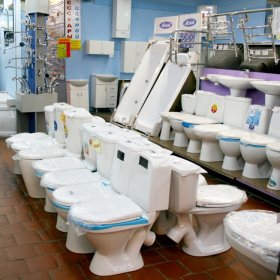
The life of modern man is highly technological. Sophisticated devices designed to provide comfort and convenience can be found anywhere. Especially a lot of them where we spend the most time. According to statistics, more than five years of his life, a person is in the toilet room, so it is not surprising that many people care about how to choose a toilet. Given the widest range of plumbing stores, this is indeed not so simple.
Content
Choose the material and shape of the device
The first thing they usually pay attention to when considering plumbing exhibited in a store is the material from which it is made. It is no coincidence that this indicator determines not only the appearance of the product you like, but also its durability, reliability and hygiene.
The following are the most common toilet options.
Option # 1 - faience toilets
The equipment most in demand due to the low cost. They are made of faience fired with a special method with an additional coating, which increases strength and reduces the porosity of the surface of the product. A large number of pores in the material allows it to absorb impurities and odors, so special efforts must be made to clean the surface.
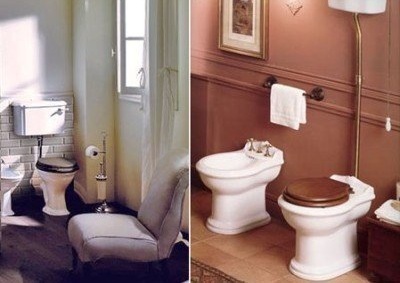
The strength of such toilets is insufficient. When handled carelessly, cracks and chips appear very easily.
Option # 2 - porcelain toilets
Strong and durable plumbing. With careful handling, it can last for decades. It has an attractive appearance. The main disadvantage of porcelain is its rather high price.
Option # 3 - steel toilets
Especially good for those who, thinking about which toilet to choose, make a non-standard decision. The equipment is easy to clean, has high resistance to mechanical damage, is durable and durable. Manufacturers of luxury plumbing often use steel to create structures of the most unusual shapes. Their cost is quite high.
Option # 4 - artificial stone toilets
They are made of cast stone, which includes crumbs of natural stone mixed with components that provide special strength to the material. The special coating gives the product high resistance to mechanical stress and hygiene. The cost, in comparison with structures made of natural material, is also significantly lower.
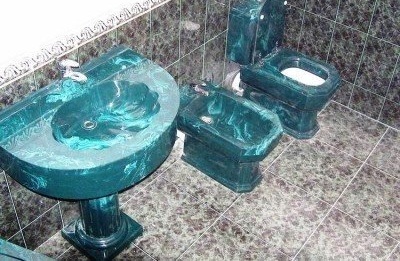
The appearance of the equipment practically does not differ from products made of natural stone, while its weight is much lower
Option # 5 - natural stone toilets
A very expensive option, suitable for those who love luxury. Making a choice of a toilet bowl in favor of a natural stone, they get very attractive and quite durable equipment. An almost perfectly polished surface is very easy to clean. However, low resistance to mechanical damage and high weight make the luxurious product not entirely practical.
Option # 6 - toilet bowls made of plastic
They are made of acrylic coated with fiberglass and a special mixture of resins, which ensures the strength of the equipment. Particularly smooth surface does not retain dirt on itself, therefore it is very easy to clean. Light weight allows installation to be carried out without any problems. The main disadvantages of the products include low resistance to temperature influences and mechanical damage.
Having decided on the material, you can consider equipment of various shapes. Indeed, in the end, it is the bowl that determines the convenience of use, hygiene and functionality.
There are three types of bowls:
- Plateequipped with a small protruding platform. This design feature is designed to prevent splashes, which most people find extremely unpleasant. However, this form of equipment is considered the most unhygienic, because everything that gets into the toilet is delayed on the platform. In addition, water constantly collects in the bowl, which over time leads to practically unrecoverable salt deposits.
- Funnel. The drain hole is located in the very center of the bowl, so the waste goes directly into the water. Due to this, the design is considered the most hygienic of all. Its main disadvantage is the presence of a large amount of spray. The only model of this kind that slightly reduces this unpleasant phenomenon is the design with a sloping back wall.
- Visor. Combines the advantages of dish-shaped and funnel-shaped bowls. The design has a special bend of the wall, which provides protection against splashes, and at the same time does not impede the ingress of waste products exactly into the drain hole.
When thinking about how to choose the right toilet, it should be remembered that such equipment has the optimal ratio of ease of use, ease of care and hygiene.
We consider design features
All toilets are equipped with a drain tank, in which water accumulates for subsequent flushing. According to the method of attachment, they distinguish:
- Separate models. They are a separately installed toilet and a tank fixed above it. The main disadvantages are the complexity of the installation, noise during operation and the inconvenience of servicing highly fixed equipment.
- Joint devicesin which the drain tank is fixed to the toilet. Such models are less noisy when working, they are easier to maintain and easier to install. There are varieties with a hidden drain system. In them, the tank is built into the wall, only the control lever remains outside.
Before you buy equipment, it is worth deciding on the method of installation of the device. There are different types of toilets:
- Floor. Traditional systems installed in most apartments. They do not require special mounting accessories, are easy to install, extremely easy to operate and maintain. They can be used with any type of drain tanks. A significant drawback is the rather impressive dimensions of the device.
- Wall or outdoor. Designs are designed for mounting close to the wall.They have an attractive laconic form, small size and a hidden mount for the drain tank. When installing the equipment, a decorative panel is used to hide the tank and communications.
- Outboard. They are installed using special equipment, the so-called installation, behind which the drain tank is hidden. Thanks to their design features, they visually expand the space and facilitate the care of the toilet room. The compactness of the product allows you to significantly save space in the room.
You need to properly evaluate your toilet room and understand that not every type of equipment in it can be mounted without additional work. For example, stopping on a hanging toilet for an apartment still Soviet-built, you need to be prepared for that, you have to purchase a special installation for false walls. Since builders often separated communications from the toilet room using a partition from chipboard.
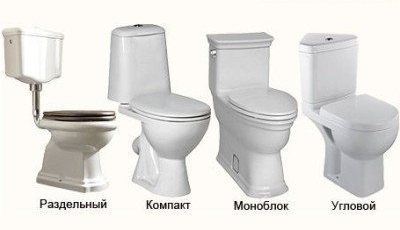
Types of toilets according to the method of fastening the drain tank. Separate stands apart - such a system involves a significant increase in the speed of water when flushing
Special attention should be paid to the choice of a drain system or toilet outlet. It must be chosen depending on the type of sewage laid in the house. Based on the design of the drain, these types of toilets are distinguished:
- Vertical release. Designed for rooms with a sewer going to the floor, which greatly saves free space. You need to know that in our country there are very few typical buildings with such a pipe design. Also note that it is almost impossible to adapt a device with a vertical outlet to other types of sewers.
- Horizontal outlet. A fairly common system, in addition, if necessary, such a toilet can be adapted to a vertical type sewer.
- With oblique release. The design used in all houses of the Soviet building. It is considered the most common today.
It’s hard to answer which toilets are the best. Everyone who came to the store for new plumbing must determine this for himself. After all, only he knows exactly all the features of the toilet room for which the product is intended. Given the wide range of equipment, it will be easy to make the right choice, choosing the most practical and beautiful option for the home.


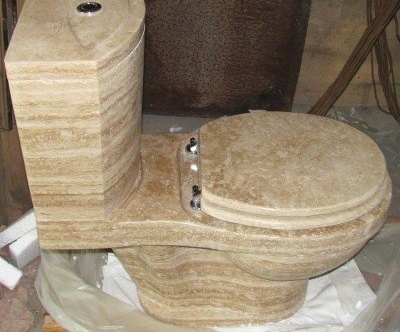



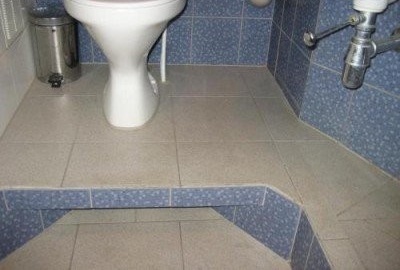
3 comments